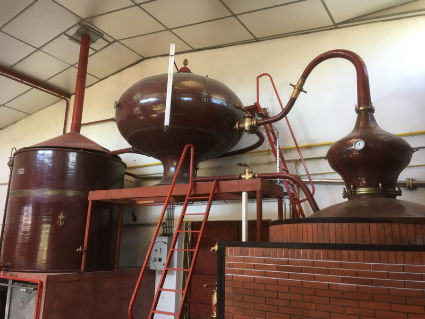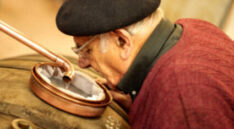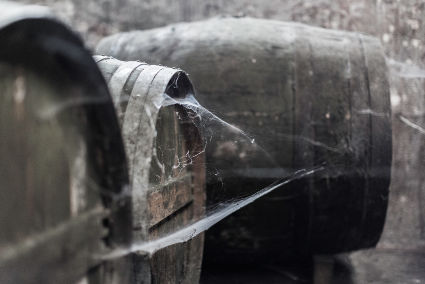
The distillery has two copper pot stills: an old 18HL used for the crucial second distillation, and a newer 25HL. This is a large capacity for a distillery of its size: it permits a shorter production time: excellent for maintaining the quality of the wine. Fresher is always better. The stills run 24 hours a day, and it takes less than a month to distill the vineyard’s modest yield. Every cut is by hand and nose.
The low alcohol content of the distilling wine, 9.9-11%, means a concentration factor of seven: seven gallons of wine to make one gallon of cognac fresh from the still. Imagine the richness and complexity of your favorite wine multiplied by seven. It takes six tons of grapes to make a single barrel of cognac.
The shape of the chapiteau, the “hat” on top pf the still, and the graceful curve of the col de cygne, the swan’s neck, influence the amount and quality of rectification, when droplets condense and drop back into the still and thus get further distilled. Cognacs can be subtle or powerful, complex or straightforward, depending on the skill and intent of the man who built the still. The smaller still’s dimpled exterior shows that it hammered out by hand, likely in the 1930s. It yields cognacs that are precise and subtly complex.


Traditional methods mean hands-on work that gives you a deeper understanding of what you’re doing. You develop a non-verbal sense of what’s right or wrong with the process. You tune in. Some modern things are better: propane gives you way more control over your distillation run than a wood fire, but the rush to cut costs and save time has essentially debased most modern commercial spirits production. Taking 10-12 hours per run makes way better distillate than 8-hour shifts. Slowing the still down, making the heads and tails cuts by nose (which takes 20 minutes), allows you to apply hundreds of hours of direct experience, and years of living with the results: get it wrong, and you have diminished an entire barrel of cognac.
Aging is in standard 350-liter cognac barrels; theirs are Limousin oak. Relatively few of the barrels are new: the family believes in cognacs that are lightly oaked: oak as a backdrop to the complex and varied flavors and aromas so beautifully focused and enriched by distillation.


